| EAST JERUSALEM: Setting the Record Straight | ||||||||||||||||||||||||||||||||||||||||||||||||||||||||||||||||||||||||||||||||
One of the main obstacles to previous peace-making efforts in the Palestinian-Israeli conflict has been the issue of dividing Jerusalem.
The Palestinian position views eastern Jerusalem as part of the West Bank, which it considers Arab territory that Israel is illegally occupying. While Palestinians reject Israeli sovereignty over any part of Jerusalem, they claim eastern Jerusalem – with holy sites to three religions – as the capital of their future state. They view the permanent status of western Jerusalem to be subject to final negotiations.
The Israeli position considers Jerusalem – both western and eastern– the country's eternal, undivided capital based on its historical, religious and political claims to the holy city. Since Israel's reunification of Jerusalem in 1967, following 19 years of division during which Israeli Jews were excluded from the eastern part, the government through successive administrations has vowed never to re-divide the city again. In 1980, the Israeli Knesset passed a Basic Law declaring reunified Jerusalem the eternal capital of Israel, while providing for freedom of access to each religion's holy sites.
There is no doubt that these competing demands and claims will be difficult to reconcile. It is made all the more difficult by a media that errs or misleads on the topic.
Do Jews have a right to settle in eastern Jerusalem? What are the legal issues regarding sovereignty over eastern Jerusalem'? Is Israel's annexation of eastern Jerusalem legitimate? The media often blurs these distinct questions together as one, answered with the facile and misleading conclusion that Israel is guilty of breaking international law. But without looking at the complex historic and legal considerations that underlie each of these questions, the media prevents news consumers from understanding one of the primary issues in the ongoing Arab-Israeli conflict.
This backgrounder addresses some of the common media misrepresentations regarding Jerusalem.
6) Are archeological studies that uncover Jewish history in east Jerusalem sinister, invalid, and tainted by a right-wing political agenda? Has archeology become "a weapon in the fight over territory?"
1) Is East Jerusalem Arab territory which Jews have been encroaching upon since its 1967 capture by Israel?
This is what much of the media suggests is the case.
This is not, however, the case. The area was only exclusively Arab for the 19 year-period between 1948 and 1967 in which Jordan occupied eastern Jerusalem.
Jewish presence and sovereignty in east Jerusalem actually predated the Arab presence there, and has been nearly continuous. For over three millennia, since King David established Jerusalem as the capital of his kingdom in 1004 BCE, there has been an almost continuous Jewish presence in Jerusalem, the holiest city in Judaism. And for most of that time it was concentrated in east Jerusalem, where Judaism's holy sites lie.
Since the mid-1800's, Jews have constituted the largest single group of residents in the city. According to historical and cultural geographer Professor Yehoshua Ben-Arieh, "In the second half of the nineteenth century and at the end of that century, Jews comprised the majority of the population of the Old City..."1 Historian Martin Gilbert reports that 6,000 Jews resided in Jerusalem in 1838, compared to 5,000 Muslims and 3,000 Christians.2 Encyclopaedia Britannica of 1853 "assessed the Jewish population of Jerusalem in 1844 at 7,120, making them the biggest single religious group in the city."3 And others 4 estimated the number of Jewish residents of Jerusalem at the time as even higher.
Until about 1860, those residents lived almost exclusively in east Jerusalem. Between 1860 and 1948, when building expanded out to western Jerusalem, Jews and Arabs lived in both east and west Jerusalem.
Jerusalem was divided for the first time as a result of the 1948 war, in which neighboring Arab nations invaded the new State of Israel and attempted to capture the entire city, both east and west. Transjordan's Arab Legion shelled and besieged the city, cutting off its Jewish residents from the coastal plain. The Jordanian forces seized east Jerusalem, expelled its Jewish residents, destroyed Jewish property and religious sites, and made it a Judenrein (Jew free) area, while Jews continued to live in west Jerusalem.
A New York Times article published right after Jordanian forces took control of eastern Jerusalem describes how Jewish demographics were changed at that time:
In 1967 Jordan initiated hostilities against Israel, which engaged in self-defensive battles. By the end of the fighting, Israel had regained control of its traditional capital and holy sites in east Jerusalem. Jews began to move back there, and the eastern part of Jerusalem again became home to Jews, as well as Arabs. The Israeli government annexed east Jerusalem, vowing never to re-divide Jerusalem again and allowing freedom of worship at the holy sites.
For more, read CAMERA's "Backgrounder: History of Jerusalem"
1 Ben Arieh, Yehoshua; Jerusalem in the 19th Century: The Old City; Palgrave MacMillan (1985) 2 Gilbert, Martin; Jerusalem: Rebirth of a City ; Viking Adult (1985) 3 Prittie, Terence; Whose Jerusalem? Frederick Muller Ltd (1981)4 British historian Tudor Parfitt as mentioned in this blog post. 5 Dana Adams Schmidt, New York Times, May 30, 1948
2) Is the construction of Jewish homes or the establishment of Jewish neighborhoods in east Jerusalem illegal under international law?
Journalists routinely convey this as fact.
But they are mistaken. International law firmly establishes the right of Israelis to settle and reside anywhere between the Jordan River and the Mediterranean Sea, an area which includes eastern Jerusalem.1,2
This international legal right is vested in political and legal agreements drawn up in the post-World War I years between 1919 and 1923. A Mandates System established in Article 22 of the Covenant of the League of Nations,3 was contained in the Treaty of Versailles and other peace treaties made with the Central Powers. The Supreme Council of the Principal Allied Powers officially recognized Palestine as a mandated state for the Jewish people at the 1920 San Remo Conference. The San Remo Resolution of April 25, 1920 served as the basis for the future administration of Palestine which would henceforth be recognized as the Jewish National Home, as envisioned by the Balfour Declaration. The resulting 1922 Palestine Mandate,4 which incorporated the resolution into its preamble, confirmed Jewish historical and national rights and converted the Balfour Declaration from a statement of British foreign policy to binding international law.5
According to Article 6 of the Mandate, "close settlement by Jews on the land, including State lands not required for public use" was to be encouraged. Article 80 of the U.N. Charter preserved this Jewish right to settlement by specifying that nothing in the U.N. Charter's chapter on the administration of Mandate territory shall be construed " to alter in any manner" the rights of people and the terms of "existing international instruments" (for example, the Mandate).
Eugene Rostow, a legal scholar who served as U.S. under-secretary of state under the presidency of Lyndon B. Johnson, explained that "the Jewish right of settlement in the area is equivalent in every way to the right of the existing Palestinian population to live there." 6
1 Jacques Paul Gauthier, Sovereignty Over the Old City of Jerusalem: A Study of the Historical, Religious, Political and Legal Aspects of the Question of the Old City, Institut universitaire de hautes études internationales (2007) 2 Cynthia Wallace, Foundations of the International Legal Rights of the Jewish People and the State of Israel: Implications for a New Palestinian State, Charisma Media (2012) 3 The Covenant of the League of Nations, Article 22 4 The Palestine Mandate 5 Howard Grief, "Legal Rights and Title of Sovereignty of the Jewish People to the Land of Israel and Palestine under International Law," Nativ Online, Vol. 2, 2004 6 Eugene Rostow, "Historical Approach to the Issue of Legality of Jewish Settlement Activity" The New Republic, April 23,1990
3) Are the occupation and annexation of east Jerusalem by Israel illegal under international law, constituting a theft of "Palestinian land?"
Palestinian and European organizations, activists and media outlets promote this concept.
But these claims are rooted in politics rather than in any definitive international law. In fact, there are differing opinions regarding the status of Jerusalem under international law, including those of prominent jurists and legal scholars who argue that Israel's claim to sovereignty over a unified Jerusalem has the most legitimacy.
Those who argue that Israel's claim to sovereignty in Jerusalem is illegal frequently refer to UN General Assembly Resolutions 181 and 194, calling for Jerusalem to be a corpus separatum (separate body under international sovereignty).1 Others suggest that the inalienable right of sovereignty over the city belongs to the Palestinians, whom they allege are the indigenous people of the land, descended from the Canaanites.2 Jewish inhabitants of the land, the same sources claim, are descended not from biblical Israelites but from Khazars, a nomadic Turkic tribe who converted to Judaism in the 800's.3 (The Khazar theory is extremely contentious, rooted in politics, with a new,4 controversial5study supporting it, but most genetic studies refuting it.6 7 8 9)
Resolution 181, which recommended a partition plan for territories held under the British mandate, called for the internationalization of Jerusalem for 10 years, following which a referendum was to determine its status.10 While this plan was reluctantly accepted by the representatives of the Jewish community in the area at the time, it was rejected by the Arab leaders who attempted to forcefully rid the region of the newly declared state of Israel in an unlawful aggressive conquest.
UN General Assembly Resolution 194 [1948] called for the establishment of a Conciliation Commission to facilitate peace between Israel and Arab states.11 Among the proposals of the resolution was that Jerusalem and Bethlehem be placed under UN control. But this resolution too was rejected by Arab leaders.
Neither of those UN resolutions constitute international law. The United Nations General Assembly (UNGA) is empowered only to make non-binding recommendations with no legal enforcement or obligations.12 Moreover, even had such resolutions carried any legal weight, Arab representatives rejected and aborted those same resolutions with their belligerent actions. Thus nullified, these resolutions cannot now be invoked to confer legitimacy upon Arab demands.13
In addition, the U.N. made no effort to renew resolutions regarding Jerusalem as a corpus separatum during all the years of Jordan's occupation of east Jerusalem or thereafter, abandoning the recommendation to internationalize Jerusalem without it ever having entered legal operation. And while the EU, in 1999, clung to the idea of an internationalized Jerusalem, "reaffirm[ing] its known position concerning the specific status of Jerusalem as a corpus separatum,"14 it has since ceased its advocacy to internationalize the city.
Jurists and scholars of international law who maintain that Israel has the best legal claim to Jerusalem indicate that Israel legitimately filled the sovereignty vacuum left after Britain's 1948 withdrawal when unlawful Arab armed aggression effectively invalidated the partition proposals. This sovereignty vaccuum was filled by Israel in western Jerusalem when it came under Israel's control in 1948, and in eastern Jerusalem in 1967 when Israel replaced Jordanian occupation as the result of self-defensive actions. Because Israel's control of east Jerusalem came about via self-defense and not aggressive actions, it therefore constituted a lawful occupation, with no other claimant state possessing a legitimate title.
Sir Elihu Lauterpacht, an international legal expert, scholar and director emeritus of the Lauterpacht Centre for International Law at the University of Cambridge, details the legal justification for Israel's sovereignty in east Jerusalem. According to the scholar, "Jordan's occupation of the Old City–and indeed of the whole of the area west of the Jordan river entirely lacked legal justification" and was simply a "de facto occupation protected by the Armistice Agreement." This occupation ended as a result of "legitimate measures" of self defense by Israel, thereby opening the way for Israel as "a lawful occupant" to fill a sovereignty vacuum left by Britain's withdrawal from the territory in 1948. 15
Professor Stephen Schwebel, former judge on the Hague's International Court of Justice, differentiates between aggressive and defensive conquests, noting that
As Schwebel explains, "Jordan's seizure [in 1948] and subsequent annexation of the West Bank and the old city of Jerusalem were unlawful,"17 arising as they did from an aggressive act. Jordan therefore had no valid title to east Jerusalem. When Jordanian forces attacked Jerusalem in 1967, Israeli forces, acting in self defense, repelled Jordanian forces from territory Jordan was illegitimately occupying. Schwebel maintains that in comparison to Jordan, "Israeli title in old (east) Jerusalem is superior." And in comparison to the UN, which never asserted sovereignty over Jerusalem and allowed its recommendation of a corpus separatum to lapse and die, he sees Israel's claim to Jerusalem as similarly superior.
The late Julius Stone, recognized internationally as one of the world's premier legal theorists, explained that Israel is "in lawful control of territory in respect of which no other state can show a better – or, indeed, any– legal title" under well-established principles of international law. Not only was Israel's initial position in east Jerusalem in 1967 that of "lawful occupant entitled to stay under the rule uti possidetis " (i.e. property remains with its possessor at the end of a conflict until a treaty is signed with the ousted sovereign), but Jordan possessed no "rights of eventual restoration of an ousted sovereign" because its seizure of east Jerusalem in 1948 was an unlawful invasion and its annexation violated the Armistice Agreement. Nor did Jordan exhibit any willingness to negotiate a peace treaty with Israel in the aftermath of the war. Upon Jordan and the Arab states' re-affirmation of their principles of no recognition, no negotiation and no peaceful agreement with Israel under the Sept. 1967 Khartoum resolution, Israel had the legal right to annex east Jerusalem. In the absence of a "sovereign reversioner" (legal sovereign retaining future rights to its property through a peace treaty), Israel's possession of east Jerusalem became "an absolute title" under international law. And "a unilateral formal act of annexation" by Israel served to "vest that sovereignty" to herself. 18
Others argue that the Palestinian claim to sovereignty over east Jerusalem under the principle of self-determination of peoples cannot supersede the Jewish right to self-determination in Jerusalem. While Arabs constituted an ethnic majority only in the artificial entity of "East Jerusalem" created by Jordan's illegal division of the city, the armistice lines forming this artificial entity were never intended to determine the borders of, or political sovereignty over, the city. Moreover, Jews constituted the majority ethnic group in unified Jerusalem both in the century before Jordan's invasion, and since 1967 (the exception being during Jordan's illegal occupation).19
1 Antonio Cassese, Legal Considerations on the International Status of Jerusalem," " Palestine Year Book of International Law, vol. 3, (1986)2 Henry Cattan, "The Status of Jerusalem Under International Law and United Nations Resolutions," Journal of Palestine Studies, Vol. 10, No. 3 (Spring, 1981) )3 Ibid. 4 Eran Elhaik, "The Missing Link of Jewish European Ancestry: Contrasting the Rhineland and the Khazarian Hypotheses," Genome Biology and Evolution, 2012; 5 (1): 61 5 Seth Frantzman, "Terra Incognita: The return of the Khazar myth," Jerusalem Post, Jan. 2, 2013 6 Michael F. Hammer, Doron M. Behar, Tatiana M. Karafet, Fernando L. Mendez, Brian Hallmark, Tamar Erez, Lev A. Zhivotovsky, Saharon Rosset, Karl Skorecki., "Extended Y chromosome haplotypes resolve multiple and unique lineages of the Jewish priesthood," Human Genetics, Volume 126, Issue 5: 707–717; November 2009 7 Gil Atzmon, Li Hao, Itsik Pe'er, Christopher Velez, Alexander Pearlman, Pier Francesco Palamara, Bernice Morrow, Eitan Friedman, Carole Oddoux, Edward Burns and Harry Ostrer, "Abraham's Children in the Genome Era: Major Jewish Diaspora Populations Comprise Distinct Genetic Clusters with Shared Middle Eastern Ancestry," The American Journal of Human Genetics, Volume 86, Issue 6, 850-859; June 3, 2010 8 Christopher L. Campbell, Pier F. Palamara, Maya Dubrovsky, Laura R. Botigué, Marc Fellous, Gil Atzmon, Carole Oddoux, Alexander Pearlman, Li Hao, Brenna M. Henn, Edward Burns, Carlos D. Bustamante, David Comas, Eitan Friedman, Itsik Pe'er, and Harry Ostrer. North African Jewish and non-Jewish populations form distinctive, orthogonal clusters. PNAS, August 6, 2012 9 Harry Ostrer, Legacy: A Genetic History of the Jewish People, Oxford University Press (2012) 10 Resolution 181 – "Partition Plan" (1947) 11 Resolution 194 (1948) 12 Greenwood, Christopher "The Sources of International Law: United Nations Treaty Collection," Audiovisual Library of International Law, United Nations Web site
13 Legal dictionary definition of "estoppel"
14 Dore Gold, "Europe Seeks to Divide Jerusalem," Jerusalem Center for Public Affairs, Vol. 9, No. 14, (Dec. 10, 2009) 15 Elihu Lauterpacht, "Jerusalem and the Holy Places," in The Arab-Israeli Conflict, Vol. 1:Readings, Edited by John Norton Moore, Sponsored by the American Society of International Law, Princeton University Press (1974) 16 Stephen M. Schwebel, "What Weight to Conquest?" (Chapter 31) in Justice in International Law: Selected Writings, Cambridge University Press (1994) 17 Stephen M. Schwebel, "The Middle East: Prospects for Peace," in The Arab-Israeli Conflict, Vol. 1:Readings, Edited by John Norton Moore, Sponsored by the American Society of International Law, Princeton University Press (1974)
18 Julius Stone, "Sovereignty in Jerusalem" (Chapter 7), in Israel and Palestine: Assault on the Law of Nations, John Hopkins University Press (1981) 19 Charles Bryan Baron, "The International Legal Status of Jerusalem," Touro International Law Review, Vol. 8, No.1 (Spring 1998)
4) Are Arabs being ethnically cleansed from east Jerusalem? Are demolitions of Arab dwellings by Jerusalem authorities part of a master plan to drive Arab residents from east Jerusalem and replace them with Jewish residents?
These allegations are routinely promoted both in the media and by such anti-Israel groups as the "Israeli Committee Against House Demolitions" (ICAHD), which receives its funding from the EU, opposes the existence of a Jewish state and promotes boycotts against Israel. 1
The claims, however, are simply false. Far from being ethnically cleansed, the Arab population of Jerusalem has grown more rapidly under Israeli rule than at any other time during the 20th century. Since 1967, when Israel gained control of east Jerusalem, the increase in Jerusalem's Arab population outpaced the growth of the Jewish population.
The proportion of Arabs in the city's population has been steadily rising – from 26% in 1967 to 28% in 1980 to 35% in 2007, and to just over 36% in 2011.2. 3
Israel Kimhi of Jerusalem Institute for Israel Studies is a former city planner whose area of expertise is Jerusalem housing. He notes that Arabs built about 19,000 apartments in the city in the last 15 or so years – an increase of 83%. While much of that construction was done with legal permits, a lot was also done illegally.4
Demolition by Jerusalem authorities of structures that are built illegally take place both in the Jewish and Arab sectors. But demolitions in the Arab sector by Jerusalem authorities are frequently depicted as examples of Israel's attempt to push the Arabs out and take their place. In fact, these demolitions are determined by the number of illegally constructed buildings erected by residents without the appropriate permits. The illegal structures are demolished because they threaten delivery of public services, provision of green spaces, and preservation of archeological, architectural and historical heritage.5 Jerusalem municipal authorities consider these demolitions no less justified than demolitions by governments all over the world of structures that violate zoning laws or housing codes, do not meet planning standards, or stand in the way of urban renewal.
1 NGO Monitor: ISRAELI COMMITTEE AGAINST HOUSE DEMOLITIONS (ICAHD)
2 Jerusalem Institute for Israel Studies, Jerusalem: Facts and Trends 2007/2008: Population 3 Jerusalem Institute for Israel Studies, Statistical Yearbook 2013 Edition, Table III/I - Population of Israel and Jerusalem, by Population Group, 1922 - 2011 4 Israel Kimhi, personal communication 5 Ricki Hollander, Gilead Ini, "BBC Panorama Distorts the Facts About Jerusalem," CAMERA website
5) Do Israeli authorities selectively deny building permits to Arabs, forcing them to build illegally, while freely allowing Jews to build in Jerusalem?
This claim is similarly promoted in the media and by ICAHD.
.
But this claim, too, misrepresents the truth.
Jerusalem's Arab community receives building permits for more square meters of residential construction than does the demographically similar [in terms of population and family size] Jewish ultra-Orthodox community.
According to the most recent Jerusalem municipality records, the overall proportion of requested permits granted in the Jewish and in the Arab sectors are similar. While "nearly 10 times more [permits] were given to Israelis in west Jerusalem" than to Arabs in east Jerusalem in 2009, as mentioned in the above-quoted BBC documentary, there were also nearly 10 times as many requests in the Jewish sector than in the Arab sector.1 In other words, the percentage of fulfilled requests in east Jerusalem in 2009 was 55% in east Jerusalem vs. 63% in west Jerusalem. The proportion of granted requests for permits was similar, as well, in other years, as well. In 2008, for example, 46% of building permits requested were granted in east Jerusalem vs. 47% of permit requests granted in west Jerusalem. In 2010 , 80% of building permit requests for Arab-majority neighborhoods in Jerusalem were approved vs. 89% in Jewish-majority neighborhoods.2
1 Ricki Hollander, Gilead Ini, "BBC Panorama Distorts the Facts About Jerusalem," CAMERA website 2 Former Jerusalem municipality spokesman Stephan Miller, personal communication 3 Justus Weiner, Illegal Construction in Jerusalem, Jerusalem Center for Public Affairs (2003)
6) Are archeological studies that uncover Jewish history in east Jerusalem sinister, invalid, and tainted by a right-wing political agenda? Has archeology become "a weapon in the fight over territory?"
That is what activists who reject the notion of Jewish ties to Jerusalem and the biblical land of Israel argue. They are assisted by gullible or biased news reporters who dutifully follow suit.
In fact, the archeologists who work in east Jerusalem, including those who excavate in the City of David, are respected internationally for their scholarly contributions to the field, and carry out their work under the auspices of the well-regarded Israel Antiquities Authority (IAA). Excavations are supervised by scholars associated with recognized institutes of archaeology, with an infrastructure for research, laboratory treatment, and processing. All archeological finds – both Israelite and others – are recorded, photographed and documented according to accepted scientific standards, and each uncovered layer of the excavated area is conserved as required by the Conservation Department of the IAA. The computerized documentation of the uncovered antiquities serves as a principal data bank for researchers and curators both in Israel and abroad.1
According to the Israel Antiquities Authority, the purpose of archeology in the area is not to prove what has already been proven — that Jerusalem has a rich and ancient Jewish history — but to gain "increased knowledge about every period."2The scholars at IAA oversee excavations around Jerusalem that focus on both Jewish as well as non-Jewish finds.3.4.5
Archeological excavations in the City of David in the Silwan neighborhood, in particular, have also become a battleground between mainstream, traditional archeologists and biblical minimalists. The traditionalists believe that Jews are rooted in biblical Israel while the minimalists, known as the Copenhagen school, reject the use of the Bible as evidence for ancient Israel history and consider the concept of a biblical Israel purely fictional. 6,7,8,9 Unsurprisingly, minimalist concepts are wholeheartedly embraced by those who seek to delegitimize the Jewish state.
Efforts to delegitimize Israel's claim to Jerusalem were, in the past, limited to Arab and Muslim leaders (with assistance from a fringe cast of Israeli and Jewish malcontents), but some journalists have started to assist them by selectively denigrating those archeological excavations that demonstrate a Jewish history in Jerusalem.
While promoting the notion that Jewish rights and connection to the area are dubious and a threat to peace, they present Muslim rights and connection to the Holy Basin as a given. They suggest that it is somehow sinister to study and publicize any archeological find that demonstrates an Israelite presence in Jerusalem, contending that it is an affront to Palestinians to strengthen Israeli knowledge about and connection to Jewish holy sites. Their bottom line message is that archaeological studies that fully document the history of the area be avoided, and/or that findings supporting a Jewish presence in the area not be publicized.
Such opponents of Jerusalem archaeology turn the tables on reality by suggesting that it is Israeli authorities who are trying to erase Muslim history in the area, this despite the fact that IAA-supervised excavations preserve and publicize discoveries from all ages, including from the Islamic period By contrast, the same opponents both willfully ignore Palestinian attempts to rewrite history by promoting the idea that there are no Jewish ties to Jerusalem,10 and conceal from the public the Muslim Waqf's erasing evidence of Jewish history with unsupervised construction and dumping of artifacts from the Temple Mount.11
Indeed, it is ironic that those who campaign against excavations in the City of David and elsewhere in Jerusalem claiming that they "politicize" the field of archeology base their opposition on their own partisan politics regarding the Palestinian-Israeli conflict.
For more, read CAMERA's "The Battle Over Jerusalem and the Temple Mount: Rewriting History, Erasing the Jewish Connection to Holy Sites and Creating a Fictitious Arab History"
1 Israel Antiquities Authority – Policy for Granting Excavation Licenses in Israel
2 Yvonne Friedmann, Chairman of IAA Board, Israel Antiquities, Letter on Israel Antiquities Authority Web site 3 Israel Antiquities Authority’s Gallery of Sites and Finds: Jerusalem and the Judean Hills 4 Israel Antiquities Authority's Excavations and Surveys in Israel, Volume 121, Year 2009
5Israel Antiquities Authority's Press Releases On Most Recent Finds
6 Yosef Garfinkel, "The Birth and Death of Biblical Minimalism," Biblical Archaeology Review, May/Jun 2011 7 Phillip Davies, "The End of Biblical Minimalism?" Bible and Interpretation Web site 8 Yosef Garfinkel, "A Minimalist Disputes His Demise: Response to Phillip Davies," Biblical Archaeology Society Web site 9 Phillip Davies, "A Brief Note for Yosi Garfinkel: Response to Garfinkel’s response," Bible and Interpretation Web site 10 Ricki Hollander, "Rewriting history: Erasing the Jewish Connection to Holy Sites and Creating a Fictitious Arab History," CAMERA Web site 11 Ricki Hollander, "The Waqf’s Attempt to Change the Status Quo," CAMERA Web site
7) Is the plan by Jerusalem authorities to raze Arab homes and create "The King's Garden" archeological park in the al-Bustan area of Silwan simply a pretext for displacing Arabs from eastern Jerusalem?
This is the allegation that opponents of the project put forth, at times with the help of journalists.
But the plan does not displace Arabs from east Jerusalem – or even from Silwan. It is meant to redress the problems created by Arab residents who chose to build their homes, illegally, on conservation land.
The al-Bustan area slated to be the tourist park was preserved for centuries as a lush conservation area – under Jordanian, British and Ottoman rule. The Jerusalem municipality under Israeli authority similarly designated this area of Silwan to remain non-residential parkland.1
Indeed, when Israel gained control of the area in 1967, only 4 Arab structures stood on this land. Jerusalem municipality plans to preserve the land as public parkland were ignored and 88 Arab buildings, housing 700 residents, were constructed without permits on the conservation site,2 mostly in the 1980's and 90's.3 Because these structures were built illegally, the entire area lacks infrastructure. With no adequate educational facilities, roads, sidewalks, community facilities, open recreational spaces, electricity, water, and parking, the once lush area has been turned into a slum. And the director-general of the Israel Antiquities Authority, Shuka Dorfman, has said that the illegal building irreversibly damaged antiquities. 4
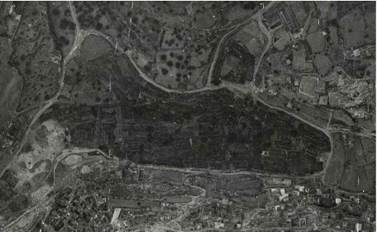 1918 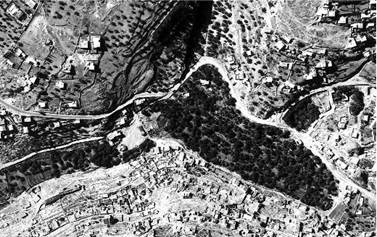 1967 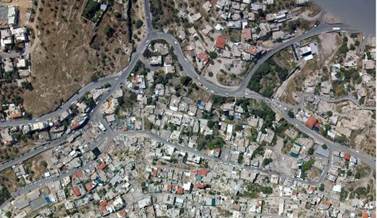 2007Aerial Views of King's Garden show that area was green until recently when Arabs illegally built in green area.
Arab residents acknowledge that they have built illegally but paradoxically argue that they were forced to do so because they could not obtain permits for construction there. (It stands to reason that permits are not given for construction on areas zoned for non-residential parkland.)
According to the current Jerusalem municipality plan for the area, the majority of illegally built houses – 66 buildings on the eastern side of the area – would retroactively be legalized, and the remaining 22 buildings on the western side would be removed only after its residents are given the opportunity to relocate to alternate housing in the eastern part of the neighborhood. There would be a change in the zoning law that would allow for construction of 1,000 new housing units, new public buildings and schools, as well as an overhaul of the neighborhood's infrastructure. 5
Those who oppose the municipality plan argue that it would nullify the residents' own plan to keep all the houses in place on the west side. They allege that contrary to the municipality's stated plan, more than just 22 houses would be razed. Most importantly, they contend, allowing the King's Garden to be developed near the City of David is a "tool of war," and "racist," creating an area of Jewish contiguity that would "Judaize" east Jerusalem.6, 7
The Jerusalem mayor, Nir Barkat, denies that the King's Garden plan is politically motivated. He considers it one of urban renewal, addressing the needs of both the Jewish and non-Jewish population.8 The Jerusalem Development Authority, for its part, argues that "creating protected green space is the only way to save the small number of open areas left in east Jerusalem." 9
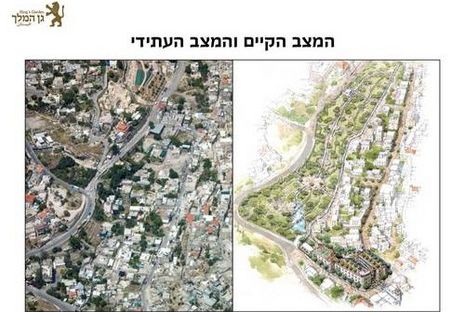 Current aerial view of area and future plans for King's Garden, Jerusalem Municipality Current aerial view of area and future plans for King's Garden, Jerusalem Municipality
The plan seems to be at a standstill at this point, but it is nevertheless instructive to understand what motivates the controversy over the project. This seems to be ultimately a question of whether Israel should exercise any authority in east Jerusalem and whether Jews should be allowed to live, build in or maintain the area for both Arabs or Jews. It is not about chasing Arabs from east Jerusalem. While this plan may create greater Jewish contiguity betweem the green and archeologically-rich areas of Silwan, allegations of displacing Arabs from eastern Jerusalem are simply incorrect.
1 Nadav Shragai, "An Outpost in David’s Garden," Ha’aretz, March 3, 2009 2 "The King’s Garden (Gan Hamelech, Al Bustan) – Development Plan," Jerusalem Municipality press release, March 2, 2010 3 B’tselem, "Jerusalem Municipality plans to demolish 22 houses in Silwan to build archeological garden," Bt'selem Web site, June 28, 2010 4 Shragai5 "A Comprehensive Plan for Silwan: Development for Residents, Visitors and Tourists," Jerusalem Development Authority
6 Ir Amim, "The Giant’s Garden," Ir Amim Web site, May 2012 7 Melanie Lidman, "MK Ariel vows to support controversial Silwan park," Jerusalem Post, Sept. 13, 2012
8 Peggy Cidor and Nechama Veeder, Interview with Jerusalem Mayor Nir Barkat in Jerusalem Post, Dec. 28, 2012
8 Melanie Lidman, "Creating facts on the ground?" Jerusalem Post, Jan. 27, 2012
| ||||||||||||||||||||||||||||||||||||||||||||||||||||||||||||||||||||||||||||||||
Monday, June 29, 2015
EAST JERUSALEM: Setting the Record Straight - Jewish territory
Subscribe to:
Post Comments (Atom)
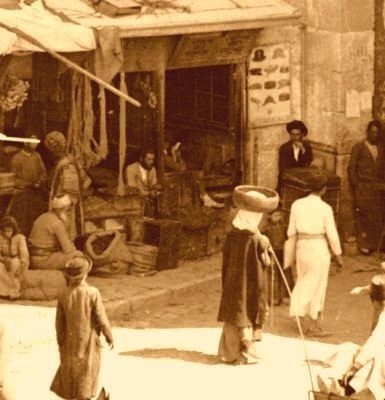
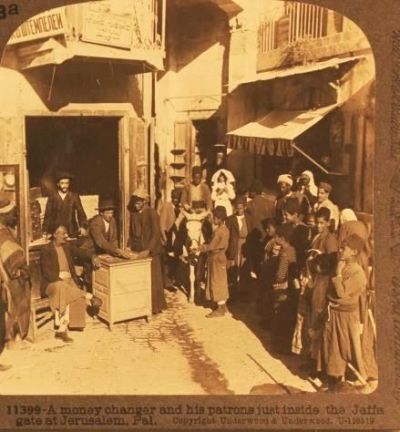
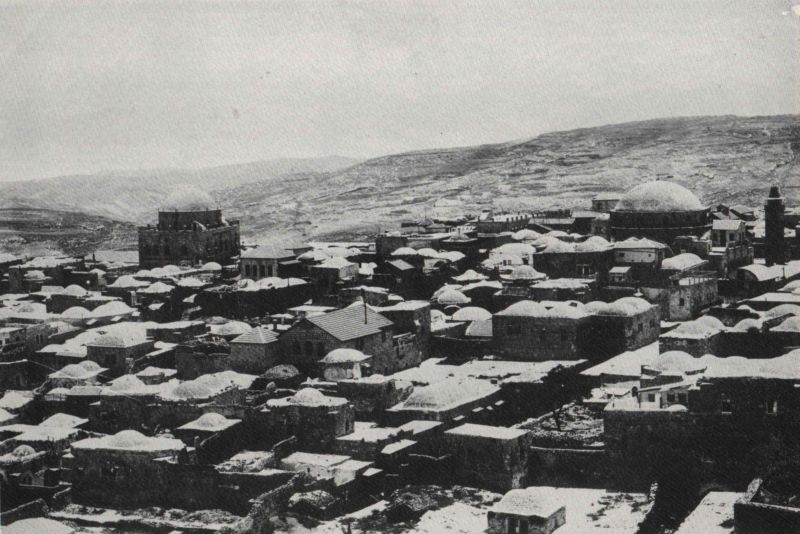
.jpg)
.jpg)
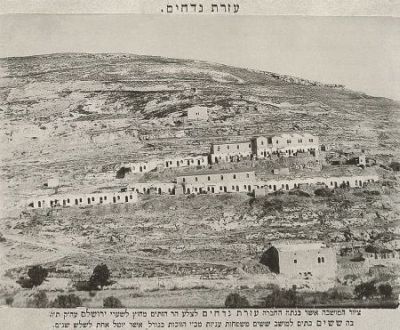
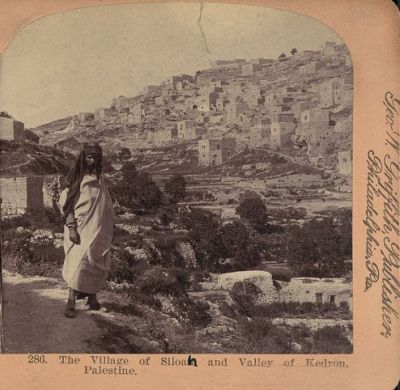
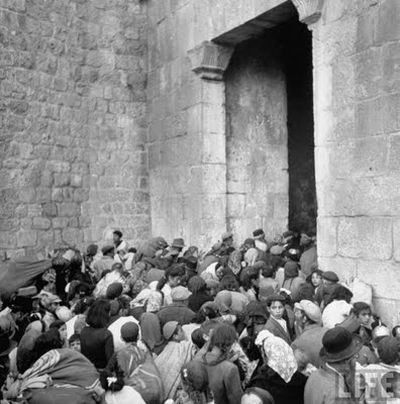

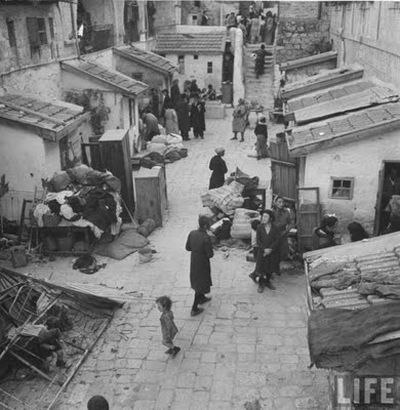
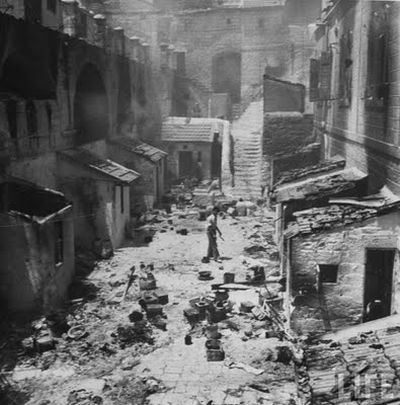
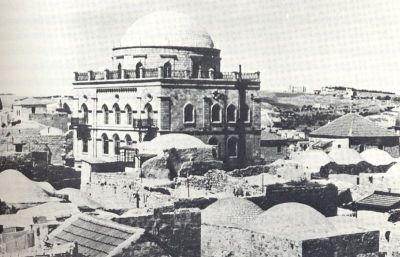
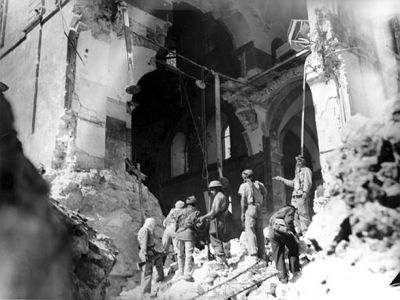
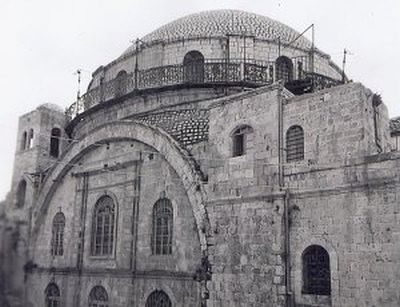
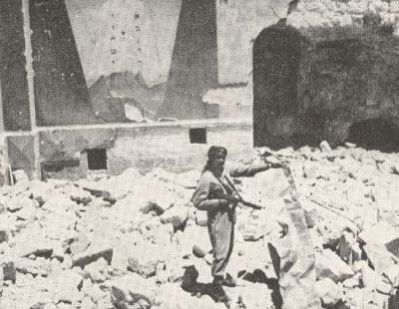
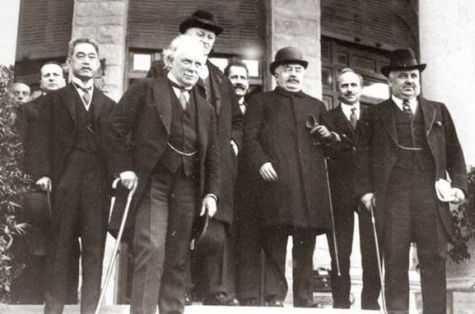

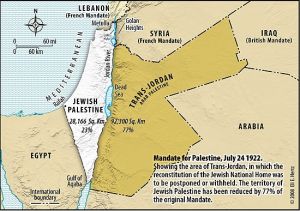
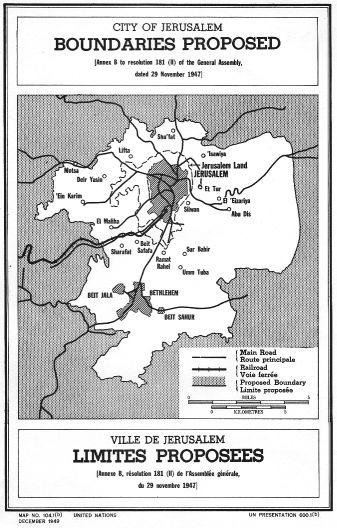

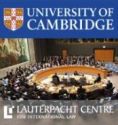

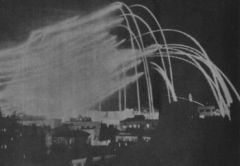
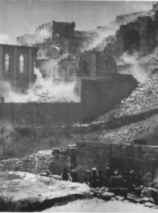


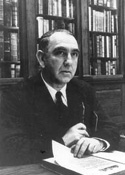
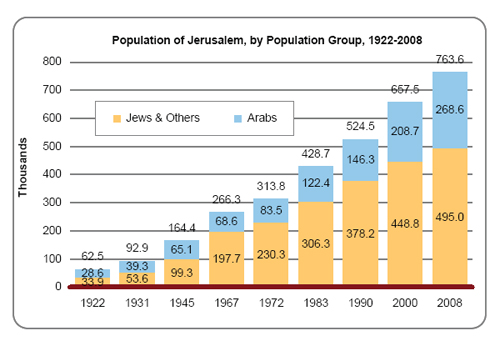
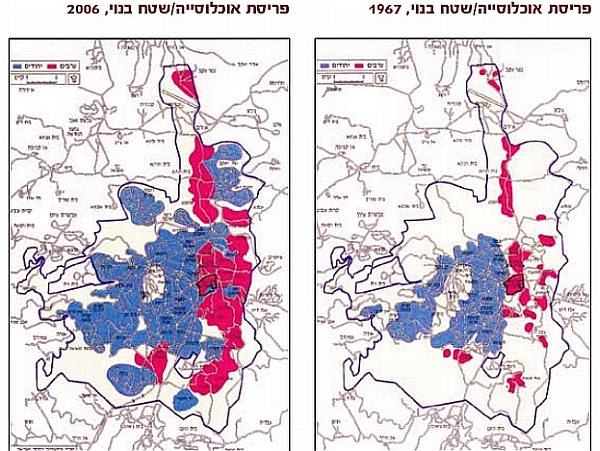
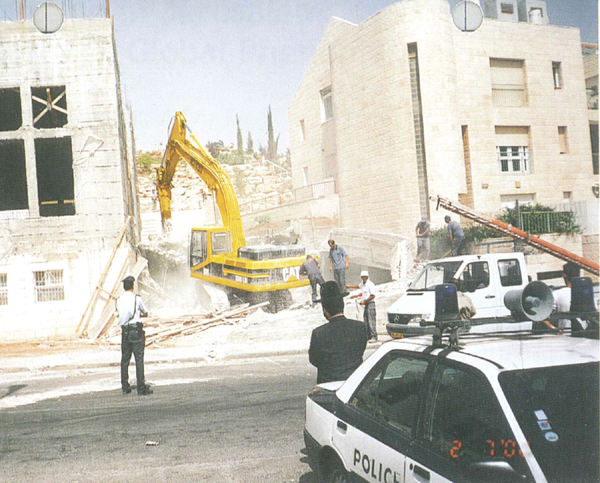
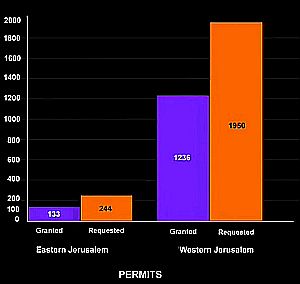
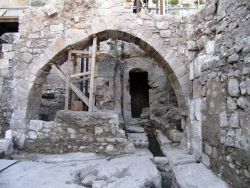
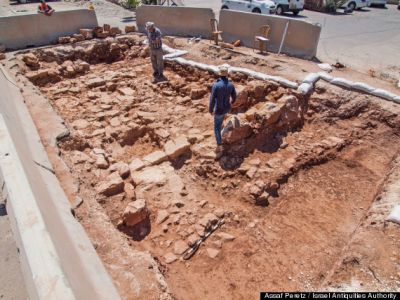
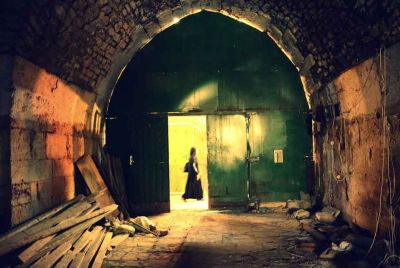
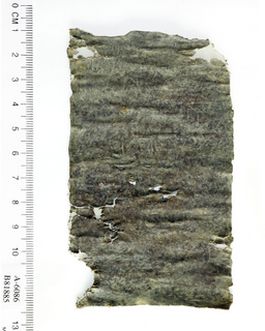
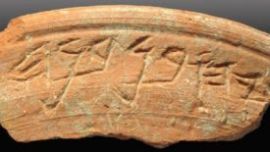
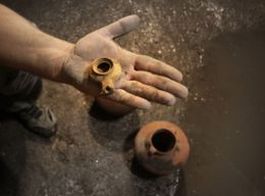
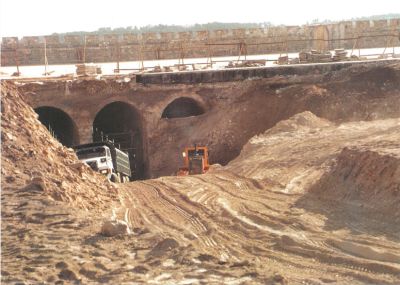
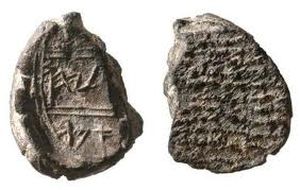
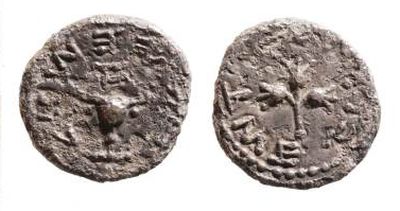
Judea and Samaria is Jewish territory - No annexation is required
ReplyDeleteLet me pose an interesting scenario. If you had a country and it was conquered by foreign powers over a period of time. After many years you have taken back you country and land in various defensive wars. Do you have to officially annex those territories. It was always your territory and by retaking control and possession of your territory it is again your original property and there is no need to annex it. The title to your property is valid today as it was many years before.
Annexation only applies when you are taking over territory that was never yours to begin with, just like some European countries annexed territories of other countries.
YJ Draiman